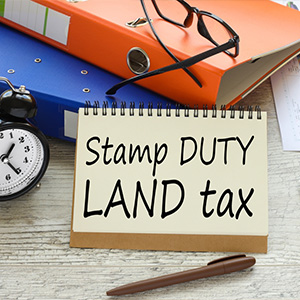
Stamp Duty Land Tax (SDLT) has always been an important element of the property purchasing process, and that is why it’s vital to check you are paying the correct amount.
Former Deputy Prime Minister Angela Rayner unfortunately found out the hard way, resigning from her cabinet roles following the news she failed to pay the correct amount of SDLT on her new property in Hove.
Rayner quickly acknowledged her mistake and knew her position in the cabinet would be under severe threat because of pressures from other political parties and the fact that she was the Housing Minister.
How did the story play out?
Angela Rayner’s mistake has played out in the public eye but how did it come to this? It all began in May with the purchase of her £800,000 property in Hove.
At that time, and based on the rules of main residence, Rayner paid an estimated £30,000 in stamp duty and cited her Hove property as her only dwelling.
This was because she had moved her Greater Manchester home into a trust and named her children as beneficiaries before taking her name off the deed of the property after being advised to do so.
Her decisions have drawn criticism with many arguing she hadn’t paid enough SDLT in the first place based on the current UK band rates and the current SDLT regulations in place would still class her Greater Manchester home as her main property.
Rayner clarified her position on removing her name from the deed, confirming, “It remains my family home, as it has been for over a decade. It contains the majority of my possessions, and it is where I am registered for most official and financial purposes ranging from credit cards to the dentist to the electoral roll.
“But most importantly, it is where my children live and have gone to school and now college and where I regularly live while caring for them.”
The widespread criticism and publicity of the story forced Rayner’s hand, who resigned from her post as Deputy Prime Minister and Housing Minister.
How does Stamp Duty Land Tax work?
SDLT is a cost you need to consider when purchasing a property, as you will usually need to pay this, but the amount you pay is dependent on the property price, how much you paid and when you bought the property.
If you are buying the property as the only residential property you own, you will usually pay SDLT at the following rates:
| Property or lease premium transfer value | SDLT rate |
| Up to £125,000 | 0% |
| The next £125,000 (from £125,001 to £250,000) | 2% |
| The next £675,000 (from £250,001 to £925,000) | 5% |
| The next £575,000 (from £925,001 to £1.5 million) | 10% |
| The remaining amount (above £1.5 million) | 12% |
The SDLT rate starts at 0 per cent, only applying to a purchase up to £125,000. This rate then gradually increases, the higher the purchase value climbs, eventually hitting 12 per cent for properties purchased for £1.5 million or more.
The more you pay for a property, the more SDLT you will pay.
However, first-time buyers do not pay SDLT if the property purchase is £300,000 or less but will pay a percentage of their home value should their purchase surpass the £300,000 threshold.
What happens with additional property purchases?
If you are purchasing an additional property, you will face an additional surcharge, which is added to the SDLT rate of five per cent.
The surcharge is what ultimately caused the confusion in Angela Rayner’s story. The advice to remove her name from the deed of her Greater Manchester property because it was in a trust, attempted to mask her clear connection to the property therefore crossing the line of what was deemed acceptable.
Given what is now known about her SDLT failings, she is expected to face a larger SDLT bill closer to the £70,000 mark, over double what she originally paid.
Get to grips with Stamp Duty before purchasing a property
Stamp Duty can be complex and it’s wise to include funds within your budget that can cover the costs. If you have a property in mind, do some research on it, look at its value and determine from there the potential SDLT costs.
If you have stamp duty concerns, you need to speak with legal property experts who will answer your queries and explain how SDLT works.
Get in touch with our team for all SDLT concerns.